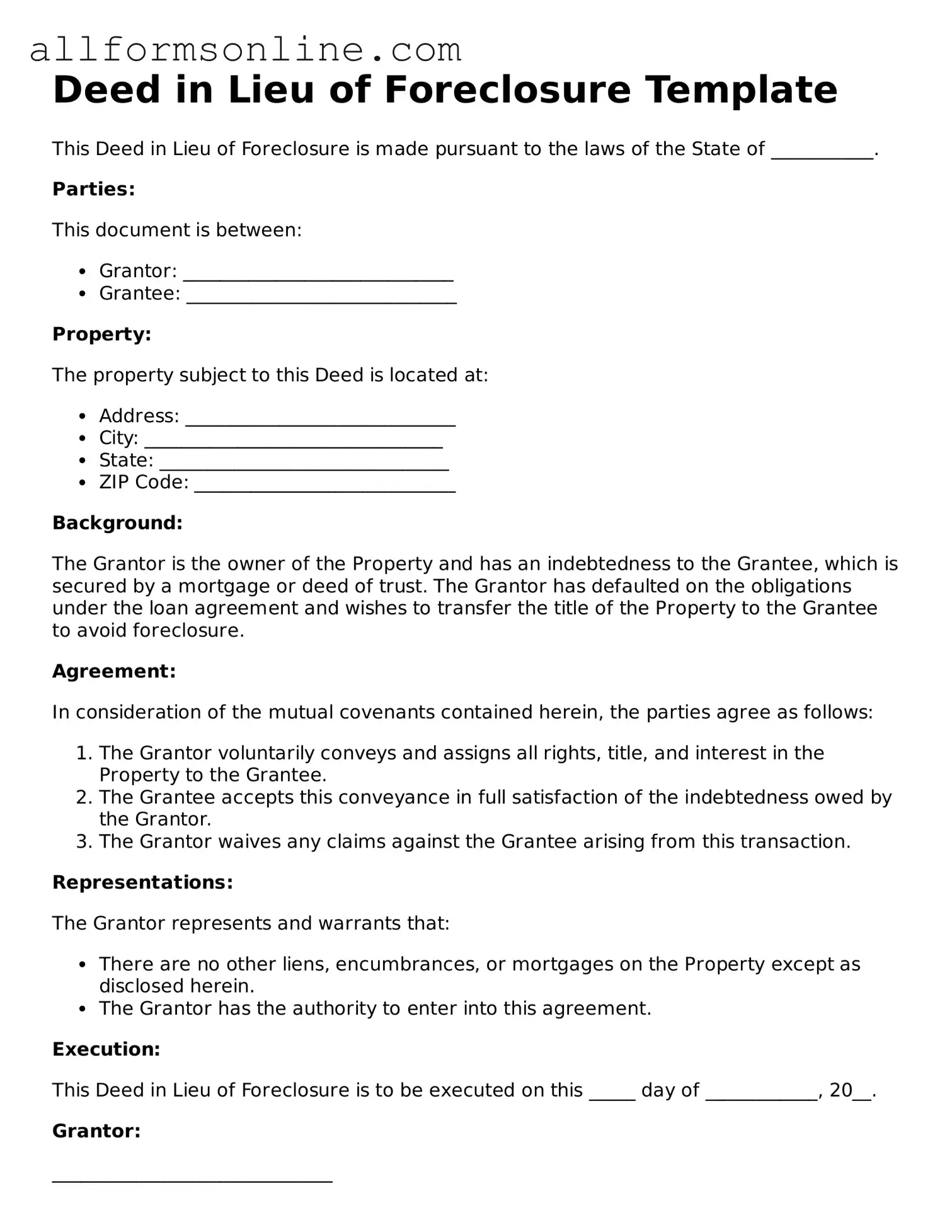What is a Deed in Lieu of Foreclosure?
A Deed in Lieu of Foreclosure is a legal agreement where a homeowner voluntarily transfers ownership of their property to the lender to avoid foreclosure. This process allows the homeowner to relinquish their mortgage obligations while the lender takes possession of the property. It can be a less stressful and quicker alternative to going through a full foreclosure process.
Who qualifies for a Deed in Lieu of Foreclosure?
Typically, homeowners who are struggling to make mortgage payments and facing foreclosure may qualify. Lenders usually look for homeowners who have exhausted all other options, such as loan modifications or short sales. The homeowner must also be able to demonstrate financial hardship and a willingness to cooperate with the lender.
What are the benefits of a Deed in Lieu of Foreclosure?
One major benefit is that it can help homeowners avoid the lengthy and damaging foreclosure process. It may also allow them to walk away from their mortgage debt without the negative impact of a foreclosure on their credit score. Additionally, some lenders may offer cash incentives or relocation assistance as part of the agreement.
Are there any drawbacks to a Deed in Lieu of Foreclosure?
Yes, there are potential drawbacks. The homeowner may still face tax implications, as forgiven mortgage debt can be considered taxable income. Furthermore, the lender may not accept the Deed in Lieu if there are junior liens or other encumbrances on the property. This could complicate the process and require additional negotiations.
How does the process work?
The process typically begins with the homeowner contacting their lender to express interest in a Deed in Lieu of Foreclosure. The lender will then evaluate the homeowner's financial situation and the property itself. If approved, both parties will sign the necessary documents to transfer ownership, and the lender will take possession of the property.
Will a Deed in Lieu of Foreclosure affect my credit score?
Yes, it will impact your credit score, but generally less severely than a foreclosure. A Deed in Lieu may be reported as a "settled" account, which is better than a foreclosure. However, it will still remain on your credit report for several years, affecting your ability to secure future loans.
Can I negotiate the terms of a Deed in Lieu of Foreclosure?
Yes, homeowners can negotiate the terms. This might include discussing any potential cash incentives or how the lender will handle the remaining mortgage balance. Open communication with the lender can lead to a more favorable outcome for the homeowner.
What should I do if my lender denies my Deed in Lieu of Foreclosure request?
If your request is denied, consider seeking alternatives such as a short sale or loan modification. It may also be beneficial to consult with a housing counselor or an attorney who specializes in foreclosure issues to explore your options and determine the best course of action.
Is legal assistance necessary for a Deed in Lieu of Foreclosure?
While not strictly necessary, legal assistance can be very helpful. An attorney can guide you through the process, ensure that your rights are protected, and help you understand the implications of the agreement. This can make a significant difference in achieving a favorable outcome.
